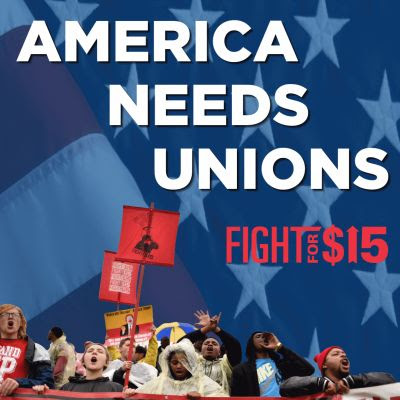 Labor Day 2017 is a sobering moment for people who care about human dignity, social justice, peace, and a life-sustaining environment. While powerful elites who control government so as to safeguard capitalism are driving civilization towards barbarism and the planet to extinction, Trump’s election has spurred widespread protests. Vigorous social movements are challenging Trump’s and the GOP’s retrograde policies and politics: corrupt, xenophobic, racist, misogynist, malevolent. Sparked by Bernie Sanders’ campaign, we’re seeing a new embrace of socialism, especially among younger activists.
Labor Day 2017 is a sobering moment for people who care about human dignity, social justice, peace, and a life-sustaining environment. While powerful elites who control government so as to safeguard capitalism are driving civilization towards barbarism and the planet to extinction, Trump’s election has spurred widespread protests. Vigorous social movements are challenging Trump’s and the GOP’s retrograde policies and politics: corrupt, xenophobic, racist, misogynist, malevolent. Sparked by Bernie Sanders’ campaign, we’re seeing a new embrace of socialism, especially among younger activists.
Why we need labor unions and why they need critical friends
From Russia With Love: Lenin's Letter to American Workers

Building Resistance on Trump Island

In Staten Island, one union local is propelling a growing labor-community alliance deep in New York’s Republican recesses.
The 1997 Teamster Victory at UPS Twenty Years Later
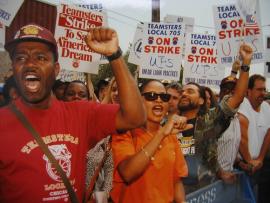
Twenty years ago this month the reform leadership of the Teamsters union, led by President Ron Carey, with the assistance of Teamsters for a Democratic Union (TDU), a reform caucus within the union, led a successful strike against United Parcel Service (UPS) that paralyzed the company, inspired labor unionists, and seemed to open up new opportunities for the workers movement. The UPS strike remains a model of strike strategy, organization, and tactics.
Argentine Workers’ Fight to Keep Jobs at Pepsi Plant Becomes a National Cause

The story of the workers of a PepsiCo factory in Vicente Lopez, Buenos Aires, Argentina may be slightly confusing to those in America where it seems normal for a factory to close, as many did in the financial crash of 2008, without the workers organizing, despite losing valuable employment in a harsh economy. Yet the actions of the nearly 700 laid-off workers since PepsiCo, the second largest food and beverage corporation in the world, decided to move their production to another city south of Buenos Aires, could teach American workers a thing or two.
Self-organization in the 2016 Palestinian Teachers Strike

From February 14 to March 13, 2016, 35,000 Palestinian teachers in the West Bank government-run school system were on strike. The teachers’ goal was to hold the Palestinian Authority to the terms of a 2013 agreement between the General Union of Palestinian Teachers (GUPT) and the Ministry of Education, an agreement the Palestinian Authority had reneged on for three years running. (Ma’an News, Feb. 16, 2016)
French Elections Install a New Political Order, But Is It Built on Sand?

At one level, France’s 2017 elections were a huge triumph for global capital. A young and very modern neoliberal candidate, Emmanuel Macron, won huge majorities for his new political party, On the Move (En Marche), in both the presidential and the legislative elections. At another level, however, Macron’s pathway forward is fraught with challenges, both from a long stagnant economic and a restive French public, many of whom stayed away from the final round of voting.
The Jewish Role in the Industrial Workers of the World

The most radical and militant union in American history was the Industrial Workers of the World (IWW), colloquially known as the Wobblies. Its active years were from 1905 to 1919, or at best until mid-1920 when it led its last major struggles—a maritime workers strike in California and a miners strike in Colorado. Fierce government repression during and after World War I, along with vigilante violence and internal divisions, dealt the IWW blows from which it never recovered. The mass industrial union movement during the New Deal passed it by. Yet, the IWW continues to exist on a small scale to this day.
U.S. Workers in the Late Neoliberal Era
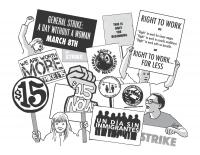
Capitalism in the United States and across the world has gone through a series of mind-bending crises, spatial “fixes,” and continuous restructurings that have disoriented organized labor in most of the developed economies since the beginning of the neoliberal era in the late 1970s and early 1980s.
Electoral Politics is a Socialist Priority, But It’s No Common Denominator
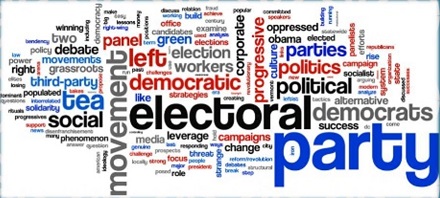
Democratic Socialists of America (DSA) is singular on the left as being both a broad radical socialist organization, encompassing left social democrats, Marxists and even a smattering of anarcho-syndicalists, combined with a strong face toward electoral politics. But an electoral orientation per se is not and cannot be the common denominator of our work. It is true that without an electoral face, any political organization is hamstrung and those on the left who argue that support for any Democrat anywhere is treasonous paint themselves into a corner. Electoral politics on the level it can be rationally conducted is worth doing. That, for me, is not in dispute. Its place in our work is what is problematic. Thinking in terms of power is about more than electioneering.
Union Democracy and Organizing Teachers in Charter Schools
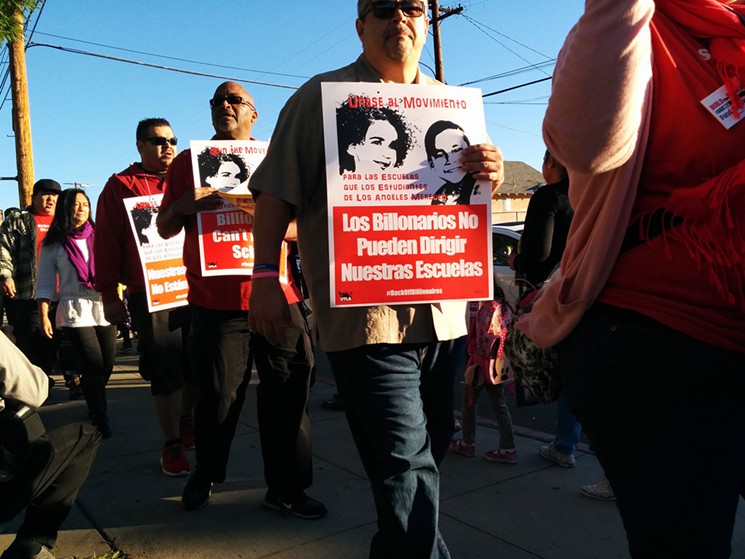
In June, the American Federation of Teachers (AFT) proudly announced that teachers at Cesar Chavez Prep Charter School in Washington, DC charter school were the first to vote to form a charter school union in DC. What the AFT has not discussed was the decision of AFT organizers to withdraw a petition for a vote at a larger DC charter school, at Paul Public Charter School, one of the first charter schools in DC. Meanwhile, teachers in the Chicago Alliance of Charter Teachers and Staff have voted overwhelmingly to merge with the Chicago Teachers Union. Their statement foregrounds the need for union democracy: “If you trust teachers, then you should trust their democratic voice — their union. Unions make schools, both district and charter, work better.”
Standing in Solidarity with Sarah Chambers
Sarah Chambers is an award winning special education teacher in Chicago’s Saucedo Academy. Sarah is a local leader a national figure in the fight to defend and transform public education against the corporate education reform attack. She is a relentless advocate for special education students and LGBTQ students. Sarah is a published author, organizer, and speaker on issues of education reform and social justice.
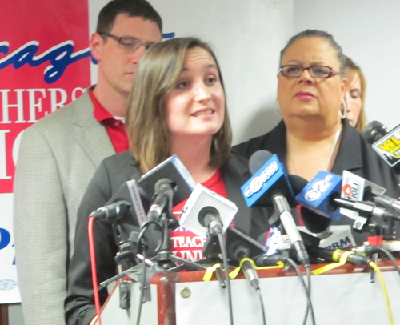
May Day: Born in the USA
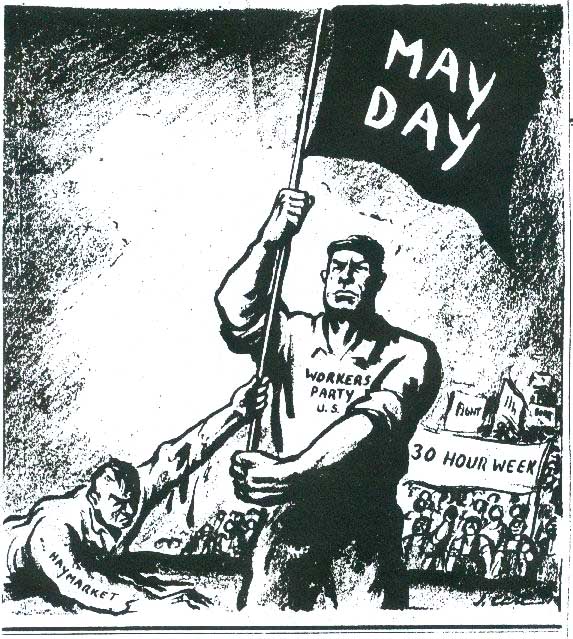
For generations, May Day, the International Workers Day celebrated by working people in more than 200 countries, was ignored in the United States, the country of its origin. In fact, the annual holiday is as American as cherry pie, commemorating as it does the 1886 nationwide general strike in which U.S. trade unionists — largely foreign-born — walked off the job in support of an eight-hour workday.
A Teacher Who's Dangerous – To Chicago's Power Elite
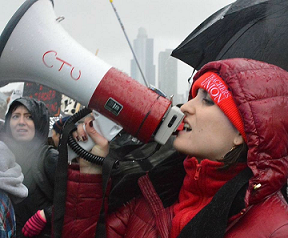 During the Chicago Public Schools (CPS) spring break, Sarah Chambers, beloved to her special needs students, well-known (to staff and parents of her school), notorious (to CPS labor relations officials), received a letter saying she was suspended and had to stay away from the school. Though Sarah was an early member of the Caucus of Rank and File Educators (CORE) that is now the CTU’s elected leadership, she remained a teacher of special needs kids who represents her school in the House of Delegates and serves on the union’s Executive Board.
During the Chicago Public Schools (CPS) spring break, Sarah Chambers, beloved to her special needs students, well-known (to staff and parents of her school), notorious (to CPS labor relations officials), received a letter saying she was suspended and had to stay away from the school. Though Sarah was an early member of the Caucus of Rank and File Educators (CORE) that is now the CTU’s elected leadership, she remained a teacher of special needs kids who represents her school in the House of Delegates and serves on the union’s Executive Board.
Public Education and Teachers Unions at a Crossroads
Public education is truly at a crossroads in the US, as are both the American Federation of Teachers (AFT) and the National Education Association (NEA).

Accreditation struggle at City College of San Francisco – Guest blog by Rick Baum
In this guest blog, Rick Baum, who teaches Political Science at City College of San Francisco and is a member of AFT 2121, reports on the struggle over accreditation and the continued attempts to destroy the institution.
Fighting Trumpism: where do we go from here?

It’s been two weeks since Donald Trump’s inauguration sparked some of the largest rallies in American history. Each week since has also seen demonstrations, culminating in those that broke out at airports across the country at the end of January to protest the president’s new Muslim ban barring travel from seven predominantly Muslim countries. Mass protests are in large measure a bellwether of popular sentiment. They carry an implicit threat that politicians who defy the will of the people will be voted out, but that threat must be channeled strategically, or it will dissipate.
Labor and "Pussy Power"
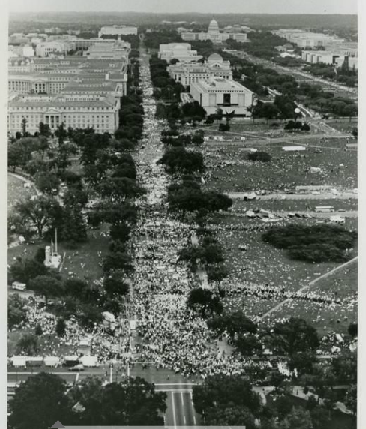 The Women’s March was glorious. Yes, I disagree with much said in the speeches, but that wasn’t an issue because like the vast majority of people who participated, I didn’t go to hear celebrities or politicians talk. I participated to show my rage and frustration at Donald Trump and the policies he and the GOP are preparing to impose on us. Women like me, disgusted, dismayed, enraged at Donald Trump’s misogyny, which the GOP has endorsed, flooded to this demonstration.
The Women’s March was glorious. Yes, I disagree with much said in the speeches, but that wasn’t an issue because like the vast majority of people who participated, I didn’t go to hear celebrities or politicians talk. I participated to show my rage and frustration at Donald Trump and the policies he and the GOP are preparing to impose on us. Women like me, disgusted, dismayed, enraged at Donald Trump’s misogyny, which the GOP has endorsed, flooded to this demonstration.
We brought family, friends, supporters, male and female, protesting the human rights and climate deniers whom Trump has brought with him into office. There was some diversity but this was primarily a march of young White women who carried signs about their bodies, “Pussy power” being the most prominent at the New York march. “Pussy power” strikes me as especially apt. Like women who fight patriarchy, it’s naughty. It evokes the strength in numbers. Most of all, the march birthed a new social movement which will owe its life to pussy.
Trump’s Victory: What American Federation of Teachers President Weingarten should say
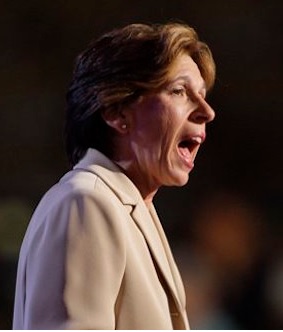 Randi Weingarten, who engineered the 1.6 million member union’s early endorsement of Hillary Clinton has issued a statement about the election, lamenting that voters chose to believe Trump about economic insecurity, rather than hearing the identical message, sent by Clinton and unions.
Randi Weingarten, who engineered the 1.6 million member union’s early endorsement of Hillary Clinton has issued a statement about the election, lamenting that voters chose to believe Trump about economic insecurity, rather than hearing the identical message, sent by Clinton and unions.
Class War by Other Means
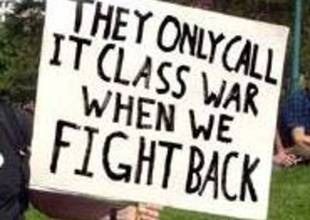
In 2008, the governments of the city of Chattanooga, Hamilton County, the state of Tennessee, and the United States all collaborated to provide Volkswagen (VW) with a $577 million subsidy package, the largest taxpayer handout ever given to a foreign-headquartered automaker in U.S. history. The bulk of the subsidy package, $554 million, came from local and state sources. The federal government also threw in $23 million in subsidies, bringing the grand total of taxpayer money that VW received in 2008 to $577 million.
